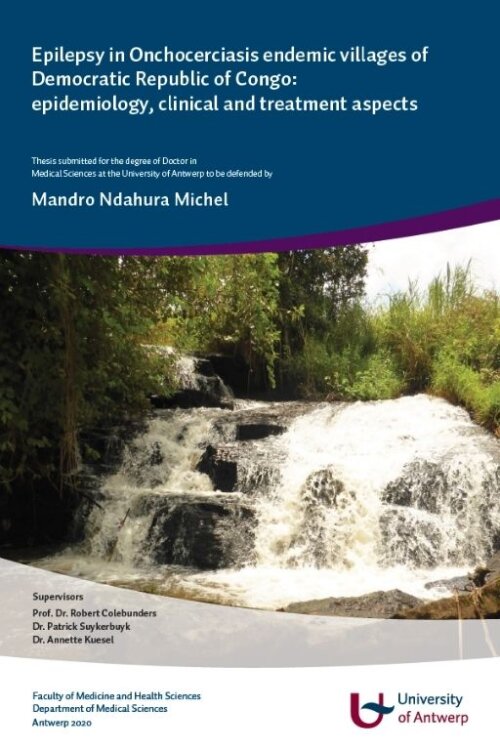Epilepsy in Onchocerciasis endemic villages of Democratic Republic of Congo: epidemiology, clinical and treatment aspects
Abstract

Epilepsy is a major public health problem in onchocerciasis-endemic regions in sub-Saharan African including in the Democratic Republic of Congo (DRC), especially in areas with low or no coverage of mass drug administration with ivermectin.
Onchocerciasis is caused by the parasitic worm Onchocerca volvulus, which is transmitted through repeated bites by infected blackflies of the genus Simulium. High prevalence and a wide spectrum of seizure disorders including nodding syndrome, now described as onchocerciasis-associated epilepsy (OAE) have been reported in many onchocerciasis endemic areas in sub-Saharan Africa. OAE is defined as at least two seizures without an obvious other cause, that start in children 3-18 years old in previously healthy children. The potential link between onchocerciasis and epilepsy had previously been suspected. However, the notion that onchocerciasis is able to induce epilepsy was not universally accepted. With this thesis, we aimed to improve our understanding of the association between onchocerciasis and epilepsy.
In a state-of-the-art house to house epilepsy survey in Draju and Kanga in the Logo Health zone in Ituri province, DRC, the epilepsy prevalence was found to be 4.6%, in an area where ivermectin was never distributed. In a case-control study, we confirmed that onchocerciasis is a risk factor for epilepsy, with cases twice more often found to present microfilariae in skin snips and O. volvulus antibodies compared to controls. Moreover among those with positive skin snips, the microfilarial density was ten times higher in cases compared to controls.
In a proof-of-concept randomized clinical trial, we carried out a four-month follow up which was evaluating the added value of ivermectin treatment in persons with OAE treated with anti-epileptic drugs. The results were inconclusive possibly because of the small size of the study. However, in a second randomized trial, with a one year follow up, comparing the added value of twice and thrice annual ivermectin treatment over annual ivermectin in O. volvulus infected PWE treated with phenobarbital, a beneficial effect of multiple-dose ivermectin in reducing the frequency of seizures was demonstrated.
In conclusion, our studies provide evidence that OAE exists in DRC. Moreover, our findings contribute to the growing evidence that an O. volvulus infection is able to cause epilepsy and that ivermectin treatment may have an effect in reducing seizures